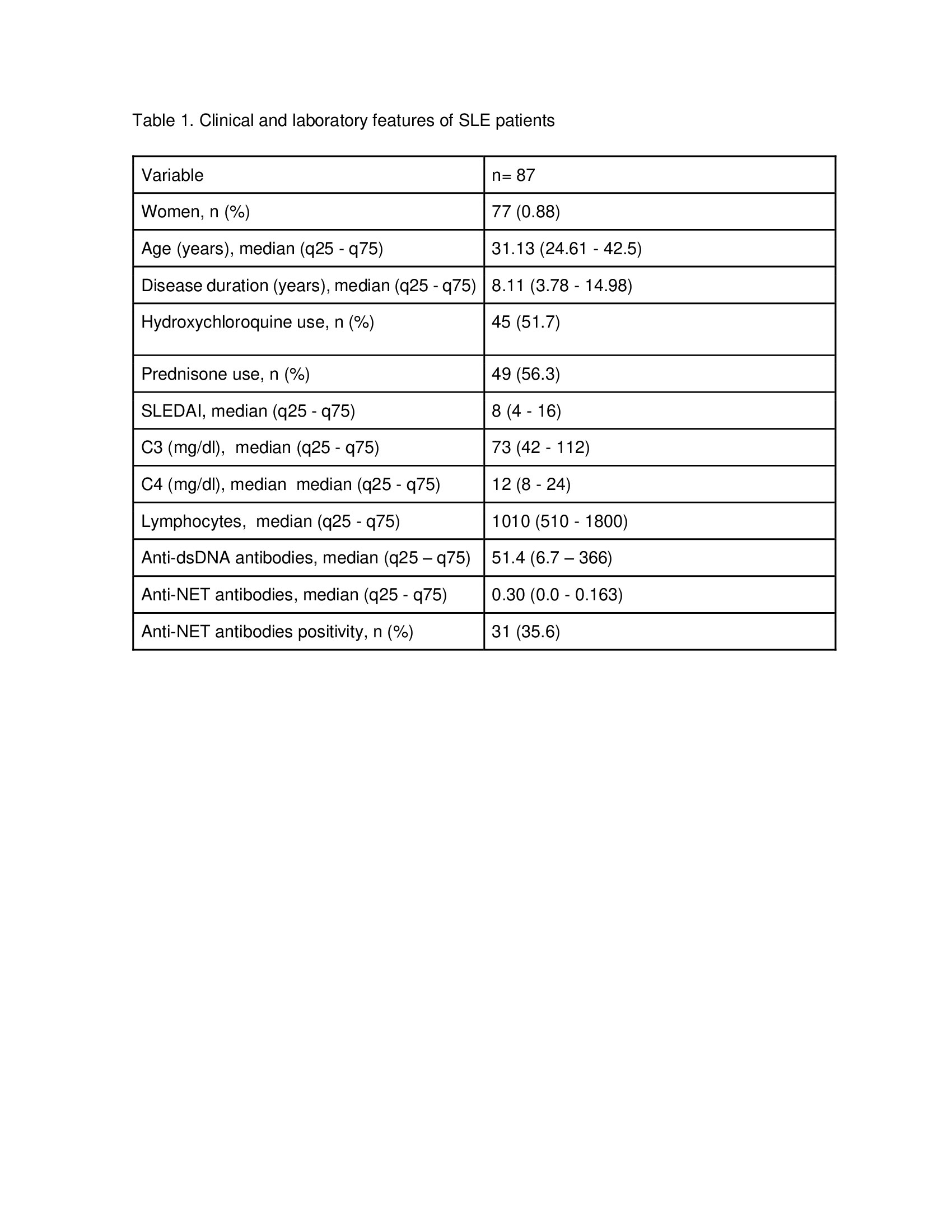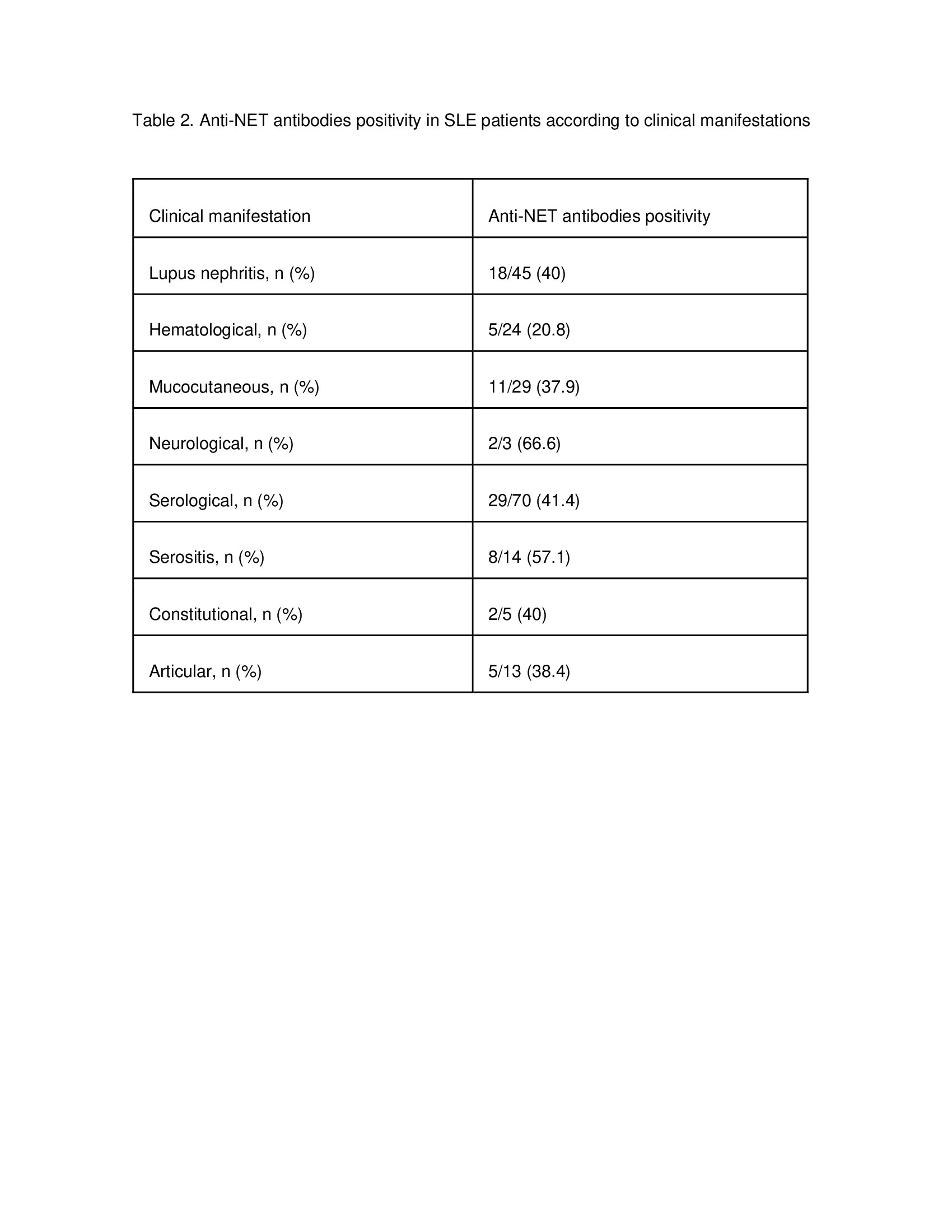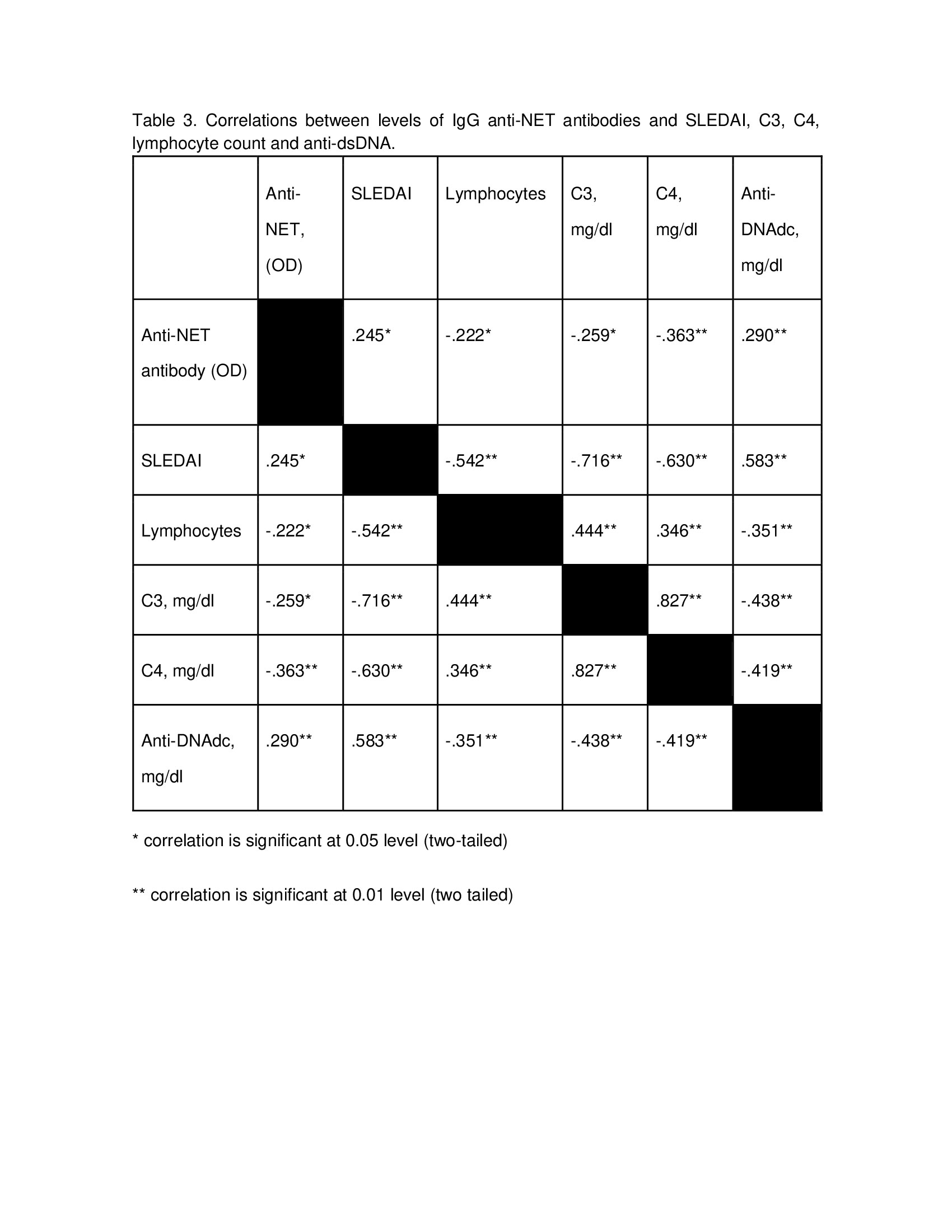Session Information
Date: Sunday, November 13, 2022
Title: SLE – Diagnosis, Manifestations, and Outcomes Poster II: Manifestations
Session Type: Poster Session C
Session Time: 1:00PM-3:00PM
Background/Purpose: Enhanced netosis has been acknowledged as pathogenic in Systemic Lupus Erythematosus (SLE). The presence of antibodies against neutrophil extracellular traps (anti-NETs) in patients with SLE might contribute to deficient degradation of NETs in these patients. Additionally, anti-NET antibodies can bind to NETs and form immune complexes and increase NET formation by neutrophils. Previously, the presence of antibodies against components of NETs has been associated with proteinuria, activity index in lupus nephritis and increased SLEDAI. However, there is scarce information about the prevalence of anti-NET antibodies and their correlation with clinical characteristics of SLE patients.
We aimed to analyze the prevalence of IgG anti-NET antibodies and their association with disease activity and clinical features in patients with SLE.
Methods: We included patients older than 18 years old who fulfilled the ACR/SLICC 2012 classification criteria for SLE. Exclusion criteria included pregnancy, overlap syndrome, malignancy, and recent COVID-19 infection. NETs were quantified ex vivo and IgG anti-NETs were detected using ELISA as previously described. Twenty-three healthy controls were included to establish the cut-off point for anti-NETs, resulting in a cut-off point of 0.076 AU (OD). Correlations between non parametric variables were performed using Spearman’s rho.
Results: A total of 87 patients with SLE were included. The majority were women (88%) with a median age of 31.13 years. Their main clinical features as depicted in Table 1. Median levels of anti-NET antibodies were 0.30 OD, and 31 patients (35.6%) were considered to have anti-NET antibodies positivity. Patients were divided according to their clinical manifestations and analyzed for anti-NET antibodies positivity; results are shown in Table 2. Besides, we analyzed correlations between anti-NET antibodies levels and levels of SLEDAI, C3, C4, absolute lymphocyte count and anti-dsDNA (Table 3). A statistically significant positive correlation between anti-NET antibodies with SLEDAI (r=0.245) and anti-dsDNA antibodies (r=0.290) was found.
Conclusion: IgG anti-NET antibodies were found in approximately one third of SLE patients, Higher prevalence of antibody positivity was found in SLE patients with serological activity, serositis and lupus nephritis. Increased levels of anti-NET antibodies correlated with increased SLEDAI and anti-dsDNA titers. To our knowledge, this is the first description of the association between IgG anti-NET and clinical features of SLE. Their characterization might allow us to address their role as potential novel biomarkers.
To cite this abstract in AMA style:
Arvizu-Rivera R, torres-Ruiz j, Pérez-Fragoso A, Alcalá-Carmona B, Nuñez-Aguirre M, Vargas-Castro A, Absalón-Aguilar A, Lira-Luna J, Gómez-Martín D. Anti-Neutrophil Extracellular Traps (NET) Antibodies and Their Association with Disease Activity and Clinical Phenotypes in Systemic Lupus Erythematosus [abstract]. Arthritis Rheumatol. 2022; 74 (suppl 9). https://acrabstracts.org/abstract/anti-neutrophil-extracellular-traps-net-antibodies-and-their-association-with-disease-activity-and-clinical-phenotypes-in-systemic-lupus-erythematosus/. Accessed .« Back to ACR Convergence 2022
ACR Meeting Abstracts - https://acrabstracts.org/abstract/anti-neutrophil-extracellular-traps-net-antibodies-and-their-association-with-disease-activity-and-clinical-phenotypes-in-systemic-lupus-erythematosus/



